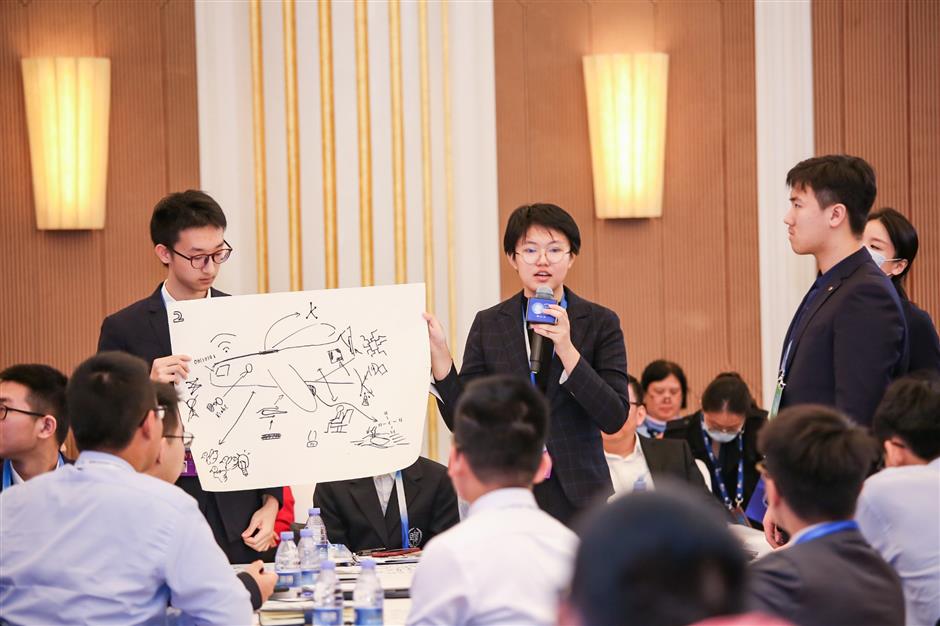Snakes alive, students present brilliant ideas to top scientists

Guo Qinsong demonstrates the robot snake.
From noise pollution, urban planning to new materials application, budding scientists shared their brilliant ideas on common concerns with top scientists at the WLF Teens at the Academy Forum held on Sunday.
Eight of the 55 students aged from 15 to 18 from across the country, including 16 from Shanghai, were picked as representatives to demonstrate their research achievements at the event, part of the third World Laureates Forum.
Guo Qinsong, from Shanghai United International School, presented a robot snake, an invention inspired by his two-week visit to a village in Guangdong Province over the summer holiday last year.
After talking to local farmers, he learnt they sprayed pesticide on crops mainly based on their experiences instead of scientific analysis, resulting in excessive chemicals on crops and environmental pollution.
“So, I spent about two months designing a snake robot,” Guo said.
According to him, it can creep into farmland, controlled through a Bluetooth connection. Equipped with cameras, it can take pictures of the crops and hidden pests. It can also detect temperature, humidity and other information in the farmland.
Neural network, a type of machine learning imitating human brain, is designed to classify insects, while image segmentation algorithm studies how the crops have been damaged by pests. Together, the two can provide a clear map of the distribution of pests, Guo said.
“It is designed in the shape of snake to be able to work over different ground,” he said. “It can cross a gap of 28 centimeters and work in tunnels eight centimeters in diameter.”
“Scientific progress should be used to solve problems in real life,” he added.

Students use diagrams to express their views on hot topics.

Students are in the midst of a lively discussion.
After individual presentations, the students were divided into four groups to discuss hot topics such as machine learning, interdisciplinary research and science solving poverty. They had the chance to talk freely to four top scientists: chemist Ma Dawei, biochemist Yang Xiongli, tribology expert Xie Youbo and engineer Xu Zhenghe.
Through diagrams, the students expressed their views.
For example, they drew a diagram of a plane surrounded by WIFI signals, the structural formula of methane, electronic components and others as metaphor for an achievement made through interdisciplinary studies and applications.
“I can see a bright future from them,” said Ma, also an academician of the Chinese Academy of Sciences.
Ma said he hopes youngsters spend time on basic science because it’s a prerequisite to making breakthroughs. Scientific research is full of hardship, and he hopes they can endure it.
“From my own perspective, I hope they study chemistry in the future because chemistry can change the world," he said. "There’s estimation that half of chemical products in the world will be made in China."
















